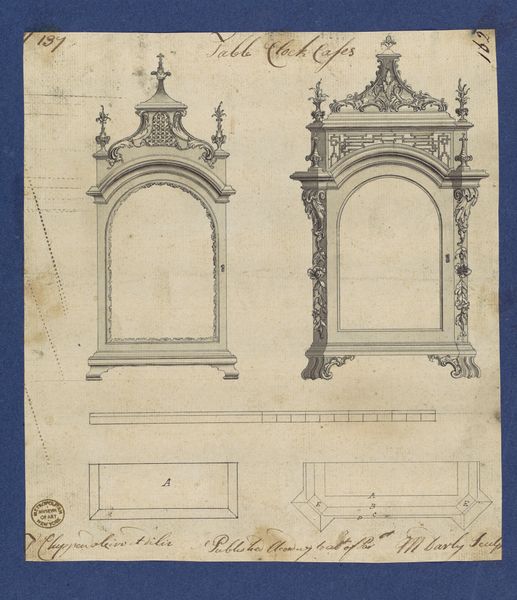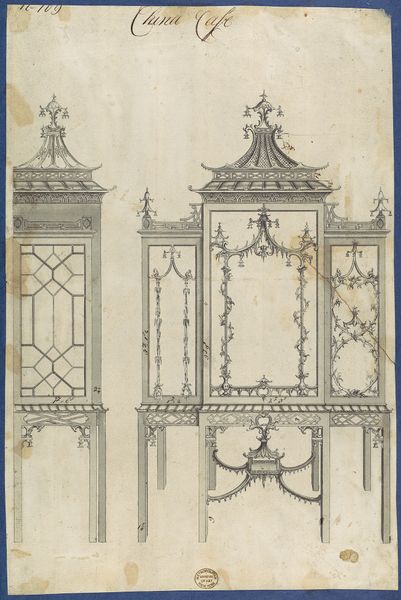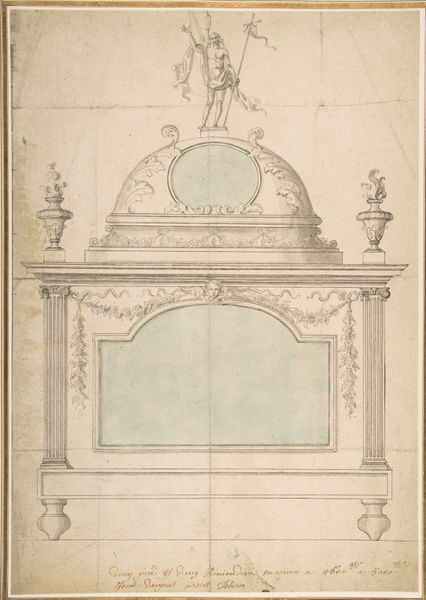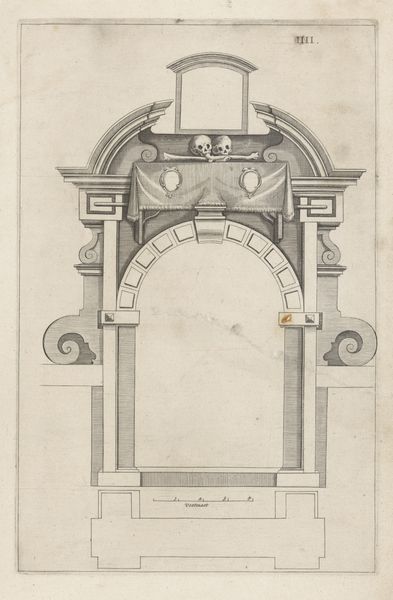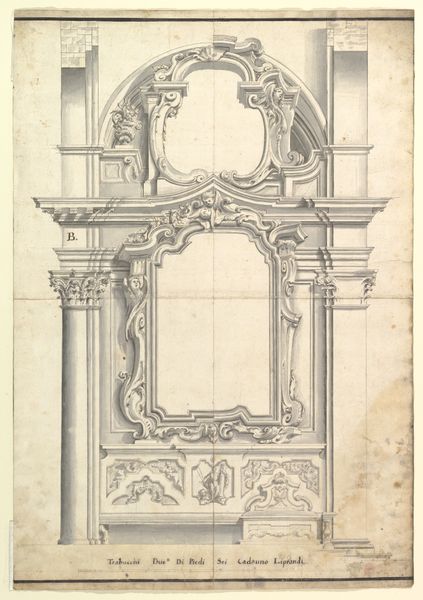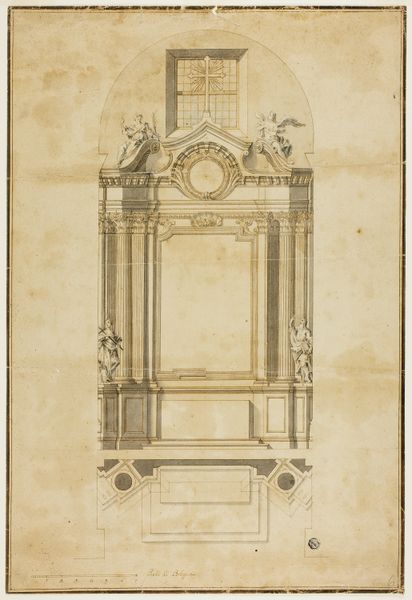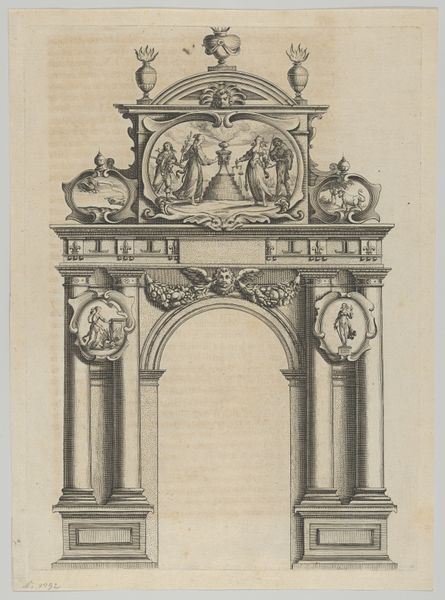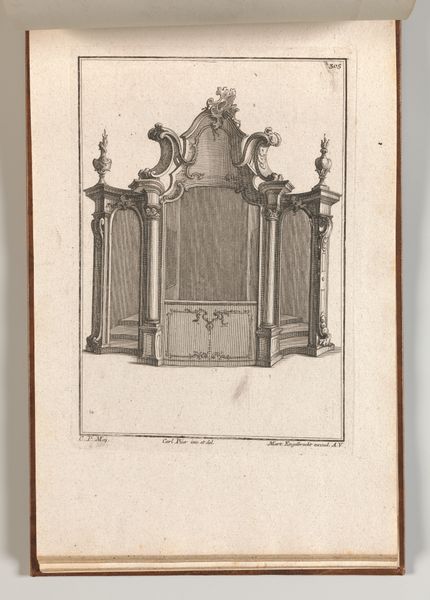
Table Clock Cases, in Chippendale Drawings, Vol. I 1754
0:00
0:00
drawing, coloured-pencil, print, architecture
#
drawing
#
coloured-pencil
#
baroque
# print
#
coloured pencil
#
15_18th-century
#
decorative-art
#
architecture
Dimensions: sheet: 8 5/16 x 6 15/16 in. (21.1 x 17.6 cm)
Copyright: Public Domain
Editor: Here we have "Table Clock Cases, in Chippendale Drawings, Vol. I" by Thomas Chippendale, created around 1754. It's a print and drawing showcasing clock case designs. I’m struck by the intricate detail and how these designs suggest a world of luxury and status. How would you interpret this work within its historical context? Curator: These designs speak volumes about the burgeoning consumer culture of the 18th century. Chippendale was not just creating furniture; he was crafting symbols of wealth and taste accessible to a growing middle class. Do you notice the distinct styles in each clock case? Editor: Yes, one seems more ornate with floral motifs, while the other is simpler, almost hinting at oriental influences. Curator: Exactly. This eclecticism was a key characteristic of the era. Chippendale cleverly incorporated elements from various cultures to cater to the diverse preferences of his clientele, thus solidifying the relationship between commodity, design, and socio-economic standing. These weren't simply drawings; they were marketing tools. Consider how these images, reproduced as prints, allowed consumers outside London to engage with high style. What do you think that says about the function of art at the time? Editor: I guess art became a tool for democratizing design. It gave more people access to luxury ideas, even if they couldn't afford the real thing. I hadn't thought of it that way, as something tied to marketing and consumerism. Curator: Indeed. It reflects how art was increasingly intertwined with economic forces. Understanding these relationships is key to unlocking a richer understanding of the period. Editor: I’ll definitely look at art through a different lens now, recognizing its role in broader social and economic narratives. Thank you!
Comments
No comments
Be the first to comment and join the conversation on the ultimate creative platform.
